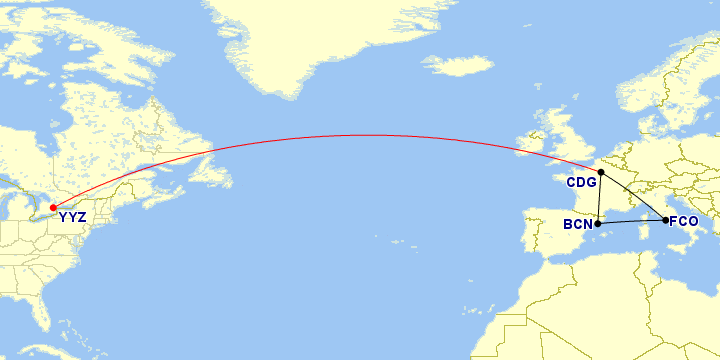Most people think that booking travel involves choosing between round-trip, one-way, and multi-city trips. The reality is that there’s a much wider range of options available to you, especially if you happen to be planning more than one trip at a time.
The term “nested trips” encompasses all the possibilities beyond a simple round-trip booking, and it can be well worth your time to experiment with different options in order to extract significant value.
This may involve using a combination of different loyalty programs and cash fares to take advantage of multiple sweet spots, and it generally requires a fair bit of legwork for everything to work seamlessly.
How Do Nested Trips Work?
A nested trip is simply any occasion when you book two or more itineraries such that they overlap in some way; that is, one booking is nested within the other.
You can think of the classic “side-trip” as an example. Travellers who frequently visit Europe know that it’s a common practice to book a round-trip to a gateway European city, and then secure cheap flights to other places on low-cost carriers like Ryanair or EasyJet.
Doing so is usually much cheaper than trying to string together all your desired European destinations on a single multi-stop ticket.
For example, you could hop on a direct flight from Toronto to Paris using Aeroplan points for Air Canada Signature Class or Air France/KLM Flying Blue miles for Air France business class. This is booked as part of a round-trip flight that will eventually get you back home.
Once you’re in Paris, you could then visit Barcelona and Rome before flying back to Paris, all on cash fares with ultra-low-cost carriers.
After getting back to Paris, you’d then simply hop on the flight back to Toronto.
However, nested trips can get a lot more interesting and ingenious than that. One example is “back-to-back ticketing”, which is a booking practice that airlines don’t particularly like, akin to hidden city ticketing.
For any given route, airlines typically file dozens of different fares, with more restrictive fares priced lower than less restrictive fares. One of the restrictions you’ll commonly see on cheaper fares is a minimum stay requirement of, say, three nights (i.e., you must stay at your destination for at least three nights before taking the return flight home).
That makes sense, since the cheaper fare with the minimum stay would…
Click Here to Read the Full Original Article at Prince of Travel…
